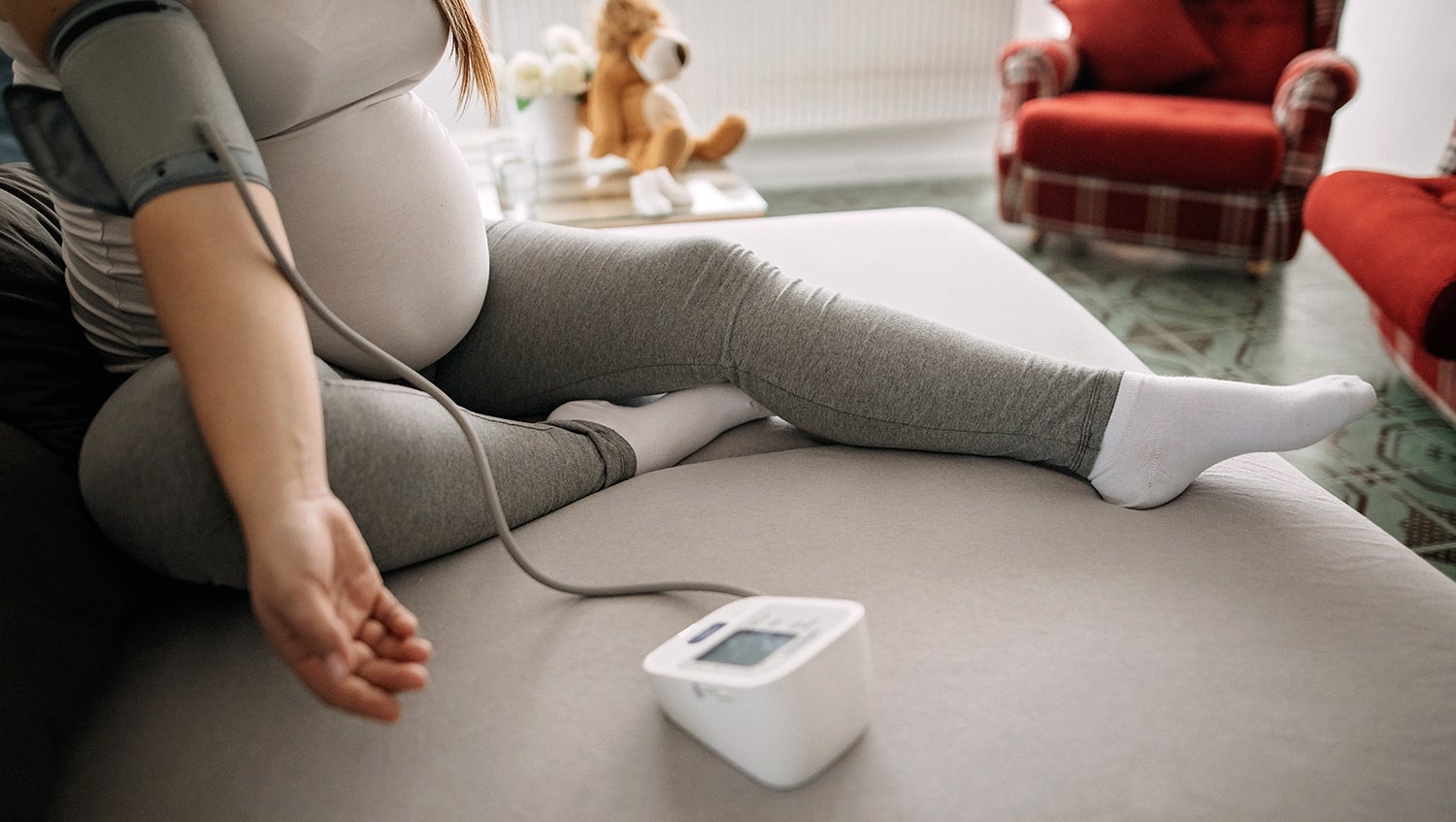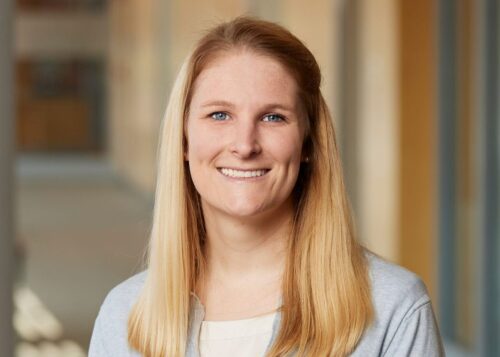Innovative Remote Blood Pressure Monitoring Program Significantly Drops Rate of Severe Hypertension Postpartum
May 26, 2022

Getty Images
With glaring racial disparities in maternal mortality, a program that could begin to bridge gaps in postpartum care was desperately needed.
In April 2020, the start of the pandemic, Christina Yarrington, MD, FACOG, director of labor and delivery at Boston Medical Center knew that in order to address the approximately 30% of patients who manage hypertensive issues during their pregnancies, she needed to think creatively. So, she and her team launched a high-tech home blood pressure monitoring program. They provided postpartum patients with easy-to-use blood pressure cuffs to monitor their blood pressure at home. Using cellular-enabled technology, these cuffs can capture readings with one touch, encrypt vitals, and send data to a HIPAA-compliant web portal using the local cell phone network. Patients using the device do not need a cellphone, data plan, or any additional interfacing.
This was intentional, according to Yarrington: “Understanding social determinants of health and all of the barriers to care that our patient population experiences, I wanted to choose a technology with user experience at the forefront,” she says.
What began as an innovative postpartum solution during the pandemic has since blossomed into a new way for clinicians to support patients through pregnancy, postpartum, and beyond. Since the program launched, it has won a Hypertension Innovator Award from the U.S. Department of Health and Human Services (HHS), secured funding from BMC’s Health Equity Accelerator, and hired a full-time nurse managerial position.
To learn more about the innovative, and still expanding, program that seeks to improve the health outcomes of pregnant people at risk for postpartum hypertension, HealthCity spoke with Yarrington and nurse manager Megan O’Brien, RN.
HealthCity: What is the process for postpartum patients involved in the remote blood pressure monitoring program?
Megan O’Brien, RN: Once a patient has been discharged home after the baby’s birth, we provide them with a cloud-connected blood pressure cuff. Over the next six weeks, I talk to them almost daily about their results, the signs and symptoms of hypertension and preeclampsia, best practices when taking their blood pressure, and what they can do to stay healthy.
In the postpartum period, there’s rightfully so much focus on the baby, but having that attention also swing back to the mom is very gratifying. I can almost see when they realize they can do something about their blood pressure, and it’s just amazing to see them take ownership and gain that power over their own health outcomes.
“In the postpartum period, there’s rightfully so much focus on the baby, but having that attention also swing back to the mom is very gratifying. I can almost see when they realize they can do something about their blood pressure, and it’s just amazing to see them take ownership and gain that power over their own health outcomes.
When there’s a concern, I reach out to one of the Obstetrics attendings and talk through that patient’s case with them. We’ll adjust the patient’s medications, start them on new medications, have them come into the hospital for treatment, or wait to see what happens with their blood pressure the next day. What this program really does is help us capture patients who are having issues or complications much faster and apply interventions much more quickly.
Christina Yarrington, MD, FACOG: It was important to me that we made this solution as easy as possible for our patients. One thing we learned during COVID-19 is that not all our patients have access to technology, so we offer telehealth appointments by video and phone. We also chose a cuff that allows the patient to just press a button that sends the data seamlessly from their device up into a HIPPA-compliant cloud and right into Epic. There are a lot of less expensive solutions out there for remote blood pressure monitoring, but I knew the more steps I asked our patients to take, the more likely the program would be to fail.
HC: What have you learned since the blood pressure remote monitoring program launched?
MO: Giving patients a blood pressure cuff to use at home seems like such a simple idea. However, we see how valuable this piece of equipment is to us as providers. It carries so much valuable data that helps us not just manage our patients’ blood pressure, but also their medications and other parts of their care. We are better equipped to intervene earlier and more quickly.
In addition, we have seen firsthand how the tool is eliminating barriers for our patients. This program is great because we can closely monitor them while not adding more challenges, like asking them to come into the clinic once a week. Furthermore, it really has opened a door for us to be able to collaborate with patients on their care and teach our patients how to care for themselves long-term.
HC: Are you conducting research related to these learnings?
CY: Yes. We know that maternal hypertension puts patients at greater risk of developing preeclampsia during or after pregnancy, and past research tells us that preeclampsia is the number one driver of racial disparities in pregnancy outcomes. But it’s a challenge as a clinician to take these insights and apply them to our patients, as the vast majority of published research is done on white populations and in settings where there’s ample infrastructure. We have National Institutes of Health (NIH) and HHS funding to apply what we know is a meaningful intervention to data about our population so we can understand how to truly serve our patients better.
We’re also looking at whether the relationships we’re building with our patients throughout their pregnancies will translate into an activation of our pregnant population about postpartum preeclampsia. There’s a growing understanding among our pregnant population that preeclampsia is serious and it poses a real threat to your health. But what is still under-recognized by patients, and to some degree by providers, is that complications of blood pressure don’t end once you deliver your baby, but they continue postpartum.
HC: How have you expanded the program since 2020?
CY: With the donor money secured by BMC’s Health Equity Accelerator, we now have Megan full-time. She’s been at BMC for 10 years and was an integral part of building the bridge between giving out these cuffs in the inpatient space and then supporting the results in the outpatient space. She has been working furiously to help us expand what we do in three ways:
- Complete and flesh out the postpartum program.
- Implement the same technology and close monitoring of patients who are at high risk of preeclampsia during their pregnancy. We launched that with high-risk patients in June, enrolling 114 pregnant patients, 81% of whom identify as non-Hispanic Black or Hispanic.
- Launch remote glucose monitoring using the same cell-enabled technology.
We’ve also launched a collaboration with our pharmacy, breaking down barriers for pregnant and postpartum patients who need blood pressure medications. A pharmacist can prescribe or titrate an antihypertensive medication within an hour, and we’ve teamed up with the hospital’s courier program to send the medications to the patient’s house the same day as their elevated blood pressure.
MO: Our whole team has been passionate about this work from the start. We all chipped in to make it work for a while, but now we have enough funding to truly support the program the way that it needed to be supported. It has just been amazing to see BMC’s work be recognized and to be able to break down barriers so we can really delve into supporting our patients.
HC: Can you share any outcomes?
CY: Prior to our remote monitoring program, only 13% of these high-risk patients were in compliance with the American College of Obstetrics and Gynecology’s guidelines of a blood pressure check within 7 to 10 days postpartum. In the newest phase of the program, 79% of patients had at least one recorded blood pressure measure in that window, and it increased to 91% when you expanded the window plus or minus two days.
Capturing these blood pressures allow us to intervene and start medications when necessary, so we also have seen rates of hypertension drop since the program began. Before implementation, the rate of severe range hypertension was 18.4% among patients who would have met the eligibility criteria for the monitoring program. After, the rate significantly dropped to 5.9%, that’s less than half the published rate from other studies that have done remote blood pressure monitoring without the intensive treatment. So far, our data shows that Black and Hispanic patients are engaged and sending blood pressure measurements at statistically similar rates as white patients, which ideally will help us close some gaps in access to treatment and higher rates of postpartum hypertension among women of color.
Editor’s note: This article has been updated from its original May publication to include data on the pregnancy and pharmacy expansions and outcomes of the remote monitoring program as a whole.
This interview has been edited and condensed for clarity and length.


